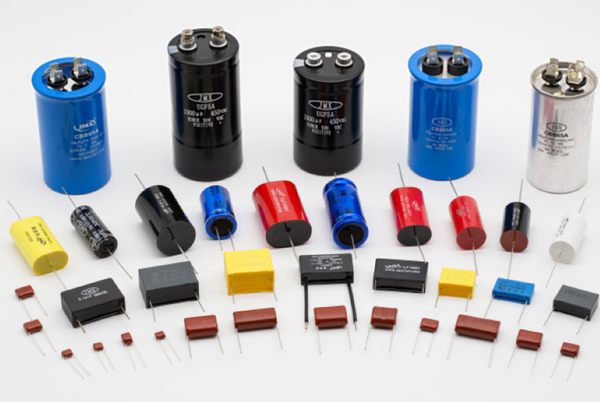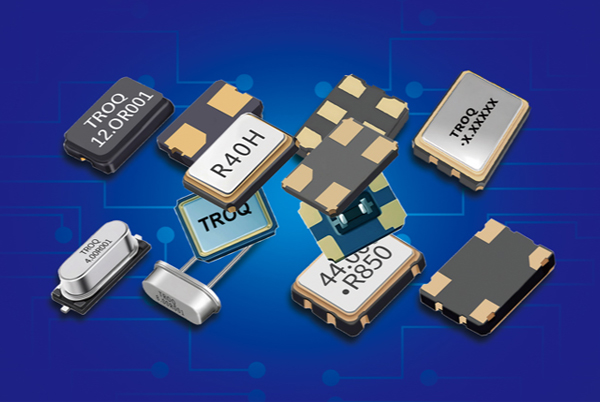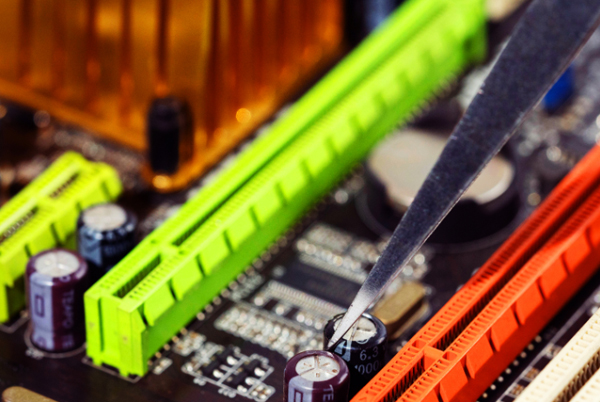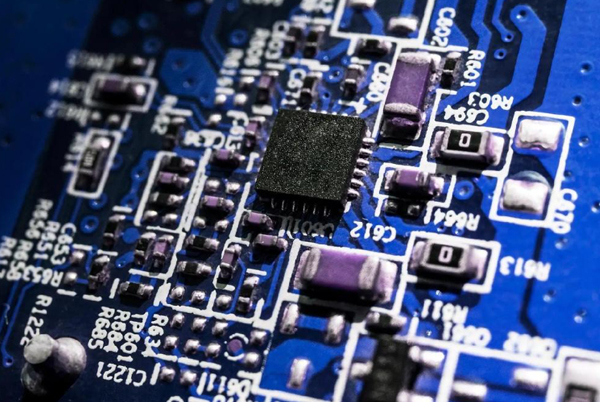Table of Contents
What are active components and passive components?
The world of electronics can be divided into two major categories: active and passive components. This classification not only reflects their different roles in circuits but also highlights their unique working principles and energy-handling capabilities.
Active components are electronic elements that require an external power supply to function. They can actively control or amplify electrical signals, serving as the “intelligent” core of electronic systems. Typical active components include transistors, integrated circuits (ICs), and operational amplifiers (op-amps).
Passive components, on the other hand, do not require an external power source to operate. Their primary functions are to respond to, store, or dissipate electrical energy, but they cannot actively amplify or control signals. Resistors, capacitors, and inductors are the most common examples of passive components.
Understanding the differences between these two types of components is essential for circuit design, troubleshooting, and optimizing electronic systems. Next, we will explore their characteristics and working principles in detail.
Detailed explanation of passive components
Passive components form the foundational structure of electronic circuits. Although they lack amplification capabilities, they play indispensable roles in signal processing, energy storage, and circuit protection.
Resistors: The Regulators of Current
Resistors are among the most fundamental passive components. Their primary function is to limit the flow of electric current. When current passes through a resistor, some electrical energy is converted into heat—a phenomenon known as Joule heating. The resistance value (measured in ohms, Ω) determines the degree to which the resistor opposes current flow.
In practical applications, resistors serve multiple purposes:
- Current limiting and protection: Preventing excessive current from damaging sensitive components
- Voltage division: Working with other components to generate specific voltages
- Signal attenuation: Reducing signal strength to suit different circuit requirements
- Impedance matching: Optimizing signal transmission efficiency
Common types of resistors in modern electronics include carbon film, metal film, and precision wire-wound resistors, each with specific accuracy, temperature coefficients, and power-handling capabilities.
Capacitors: The Storage Units of Charge
Capacitors are another critical type of passive component, capable of storing electrical charge and releasing it when needed. A capacitor consists of two conductive plates separated by an insulating dielectric material. Its capacitance (measured in farads, F) depends on the plate area, spacing, and dielectric properties.
Capacitors are widely used in circuits for:
- Energy storage: Their rapid charge-discharge characteristics make them ideal for power supply filtering
- Signal coupling: Allowing AC signals to pass while blocking DC components
- Frequency selection: Forming LC resonant circuits with inductors
- Timing control: Determining charge/discharge times in RC circuits
Based on dielectric materials, capacitors can be classified into ceramic, electrolytic, and film types, each suited for different frequency ranges and precision requirements.
Inductors: The Guardians of Magnetic Energy
Inductors operate on the principle of electromagnetic induction, storing energy in the form of a magnetic field. When current flows through a coil, it generates a magnetic field, and a changing magnetic field induces an electromotive force (EMF) that opposes the current change—a property known as self-inductance (measured in Henries, H).
Key applications of inductors include:
- Filter circuits: Suppressing high-frequency noise
- Energy conversion: Serving as energy storage elements in switching power supplies
- Frequency selection: Forming tuned circuits with capacitors
- Signal isolation: Acting as a key component in transformers
Inductor performance is influenced by factors such as coil turns, core material, and shape. In RF circuits, air-core inductors minimize losses, while ferrite-core inductors in power circuits provide higher inductance values.

Active components
Active components give electronic systems the ability to “think” and “make decisions.” They actively process signals, respond to inputs, and perform complex functions, forming the foundation of modern electronic device intelligence.
Transistors: The Cornerstone of the Electronics Revolution
The transistor is arguably the most important invention of the 20th century, revolutionizing electronics. Essentially a semiconductor device, transistors use small currents or voltages to control larger currents, enabling signal amplification and switching functions.
Based on structure, transistors fall into two main categories:
- Bipolar Junction Transistors (BJTs): Utilize both electrons and holes as charge carriers, offering high gain
- Field-Effect Transistors (FETs): Rely on a single charge carrier type, providing extremely high input impedance
Key roles of transistors in circuits include:
- Signal amplification: Boosting weak signals to usable levels
- Electronic switching: High-speed current control
- Logic operations: Fundamental building blocks of digital circuits
- Voltage regulation: Core components in voltage regulator circuits
The invention of transistors enabled the miniaturization and low-power operation of electronic devices, directly leading to modern computing and communication technologies.
Integrated Circuits: The Marvel of Miniaturization
Integrated Circuits (ICs) are complex active devices that integrate numerous transistors, resistors, capacitors, and other components onto a single semiconductor chip. Based on functionality, ICs can be classified into analog, digital, and mixed-signal types.
Notable advantages of ICs include:
- Compact size: Significant space savings
- Stable performance: High consistency among internal components
- Reduced power consumption: Optimized design efficiency
- Cost-effectiveness: Economies of mass production
From simple operational amplifiers to complex microprocessors, ICs are found in nearly all modern electronic devices and are the driving force behind information technology advancements.
Operational Amplifiers: The Powerhouse of Analog Signal Processing
Operational amplifiers (op-amps) are high-gain voltage amplifier ICs with differential inputs and single-ended outputs. An ideal op-amp has infinite input impedance, zero output impedance, and infinite open-loop gain.
Typical op-amp applications include:
- Signal amplification: Precisely amplifying weak signals
- Filter design: Constructing active filter circuits
- Mathematical operations: Performing addition, subtraction, integration, etc.
- Signal conversion: Current-to-voltage conversion, etc.
By configuring external feedback networks, op-amps can perform various complex analog signal processing tasks, making them key components in instrumentation, audio equipment, and control systems.

Core Differences Between Active and Passive Components
Having explored the individual characteristics of active and passive components, we can systematically compare their fundamental differences, which determine their distinct roles and applications in circuits.
Energy Source and Supply
The most fundamental difference lies in how they are powered:
- Active components require an external power supply to function
- Passive components operate solely on the energy of the signal itself
For example, a transistor needs a collector (or drain) power supply to amplify signals, whereas a resistor limits current simply by the flow of electricity, without needing additional power.
Signal Processing Capabilities
Their signal-handling abilities also differ markedly:
- Active components can amplify signals or convert energy forms
- Passive components can only attenuate, store, or transmit signals
An op-amp can amplify microvolt-level signals to volt-level, while a capacitor can only temporarily store charge without increasing signal energy.
Linearity vs. Nonlinearity
Most active components exhibit nonlinear behavior:
- Transistors show different conductive properties in different operating regions
- Diodes have exponential current-voltage relationships
Passive components are typically linear:
- Resistors follow Ohm’s Law (V=IR)
- Ideal capacitors/inductors have impedance proportional to frequency
Control and Response Mechanisms
Active components offer active control:
- Small signals can control large power outputs
- Enable logic decisions and signal processing
Passive components only respond passively:
- Physically react to input signals
- Cannot actively alter signal characteristics
Practical Applications: Selection and Combination
In real-world circuit design, active and passive components often work together, each leveraging their strengths to achieve system functionality. Understanding how to properly select and combine these components is a key skill in electronics design.
Power Supply Design
In power systems:
- Passive components: Filter capacitors smooth output voltage; inductors store energy; resistors provide feedback
- Active components: Voltage regulator ICs adjust output; transistors act as switching elements
For instance, in switch-mode power supplies, MOSFETs (active) rapidly switch while LC filters (passive) enable efficient energy conversion.
Signal Processing Systems
Analog signal processing typically requires:
- Passive components: RC networks set frequency characteristics; resistors divide voltage
- Active components: Op-amps provide gain and buffering
Active filters combine the gain of op-amps with the frequency properties of RC networks, outperforming purely passive filters.
RF Circuit Considerations
In high-frequency circuit design:
- Passive components: Transmission lines for impedance matching; resonant circuits for frequency selection
- Active components: Low-noise amplifiers boost signals
RF designs must account for parasitic parameters, such as equivalent series resistance (ESR) in capacitors and stray capacitance in inductors.
Digital System Integration
Modern digital systems extensively use:
- Active components: Logic ICs, microprocessors, memory
- Passive components: Decoupling capacitors, termination resistors, filtering elements
High-speed digital designs require careful power decoupling networks (passive) for signal integrity, alongside complex ICs (active) for functionality.

Common Misconceptions and Clarifications
Several misconceptions exist regarding active and passive components that need clarification to avoid conceptual confusion and design errors.
The Diode Classification Dilemma
Diodes often cause classification confusion:
- Although they conduct current in one direction, they lack amplification capability
- Generally considered passive components
- Special diodes (e.g., tunnel diodes) may exhibit active properties
The key distinction lies in whether they require external power and can amplify signals.
Power Source vs. Signal Source
Differentiate between the two types of energy:
- Active components need a power supply (e.g., VCC for transistors)
- Passive components only require signal energy (e.g., voltage across a resistor)
Even passive components need “signal energy” to function, but this differs from the external power required by active components.
Nonlinear Passive Components
Some passive components exhibit nonlinearity:
- Varactor diodes change capacitance with voltage
- Thermistors vary in resistance to temperature
Nonlinear behavior doesn’t change their passive nature, as they still don’t require external power or amplify signals.
Passive Components in ICs
Modern ICs contain:
- Most active components (transistors)
- Some integrated passive components (resistors, capacitors)
The classification depends on primary function and external behavior; integrated passives are auxiliary to IC functionality.
Future Development Trends
Electronic component technology continues to evolve, blurring the lines between active and passive components in some new devices, though the basic classification principles remain valid.
Miniaturization of Active Components
Advances in semiconductor processes bring:
- Continuously shrinking transistor sizes
- Exponentially increasing IC complexity
- Novel active devices (e.g., FinFETs)
3D integration and advanced packaging enhance system-level performance.
Integration of Passive Components
Passive components are also evolving:
- Smaller surface-mount device (SMD) sizes
- Low-Temperature Co-fired Ceramic (LTCC) technology enables high-density integration
- MEMS technology fabricates micro-passive components
Integrated Passive Device (IPD) technology combines multiple passives on a single substrate.
Emerging Hybrid Devices
Cutting-edge technologies create hybrid devices:
- Memristors: Passive components with memory properties
- Self-powered sensors incorporating energy harvesting
- Smart materials enabling adaptive characteristics
These innovations expand component options while maintaining the basic active/passive classification framework.
